Presented issue of the journal consists of two thematic blocks, devoted to the actual problems of agrarian and socio-demographic history of Russia. Pool of authors is represented by both leading scholars and novice researchers. Geography of the group of authors is wide.
 Agrarian Transformations in the Twentieth Century:
Agrarian Transformations in the Twentieth Century:
Ppractitioners, Actors, Researchers
V.V. Babashkin
Regarding the Scientific Heritage of G.A. Gerasimenko: “Democracy” and “People’s Power” as Antonyms
The article raises the question of how necessary and timely it is for the modern domestic historiography of the Russian Revolution of the twentieth century to pay qualitatively closer attention to clarifying the role of grass-roots organizations of the peasantry in the revolution. The scientific heritage of an outstanding historian G. A. Gerasimenko helps to see the overall picture of the revolution in a significantly different way compared to what Soviet historiography offered in this regard, not to mention the current post-Soviet one. Thinking about the level of democracy in the Russian revolution in a new way can change one’s perception of the problem of the prospects for “democracy” in the modern history of Russia.
The article was written on the basis of the RANEPA state assignment research programme.
Publishing: 28/08/2021
How to cite: Babashkin V.V. Regarding the Scientific Heritage of G.A. Gerasimenko: “Democracy” and “People’s Power” as Antonyms // Historical Courier, 2021, No. 4 (18), pp. 9–16. [Available online:] http://istkurier.ru/data/2021/ISTKURIER-2021-4-01.pdf
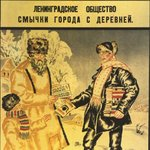 Agrarian Transformations in the Twentieth Century:
Agrarian Transformations in the Twentieth Century:
Ppractitioners, Actors, Researchers
E.A. Ignat’eva
The Institution of Commissioners in the Siberian Village of the Period of “Great Break”: Role, Function, Significance
The article is devoted to the study of the activities of the institute of commissioners in the process of continuous collectivization of the village. In the course of the study, the functions and powers of the commissioners, the nature of their relations with the local government apparatus and the population, the effectiveness of their work in the village, the place, role and significance of the institution in the system of Bolshevik power are established.
Publishing: 28/08/2021
How to cite: Ignat’eva E.A. The Institution of Commissioners in the Siberian Village of the Period of “Great Break”: Role, Function, Significance // Historical Courier, 2021, No. 4 (18), pp. 17–26. [Available online:] http://istkurier.ru/data/2021/ISTKURIER-2021-4-02.pdf
 Agrarian Transformations in the Twentieth Century:
Agrarian Transformations in the Twentieth Century:
Ppractitioners, Actors, Researchers
A.A. Kozhaeva
Escape to the Cities as a Tactic of the Struggle of the “Deprived” for the Restoration of Voting Rights in 1928–1936 (Based on the Materials of the Maslyaninsky and Iskitimsky Districts of Western Siberia)
The article is devoted to the study of departure to the cities as a tactic of the struggle of the “deprived” for the restoration of voting rights. Based on the analysis of petitions for the restoration of the voting rights of the “deprived” of the Iskitimsky and Maslyaninsky districts of Western Siberia, the behavioral practices of the "deprived" in the process of forced migration to cities are reconstructed.
Publishing: 28/08/2021
How to cite: Kozhaeva A.A. Escape to the Cities as a Tactic of the Struggle of the “Deprived” for the Restoration of Voting Rights in 1928–1936 (Based on the Materials of the Maslyaninsky and Iskitimsky Districts of Western Siberia) // Historical Courier, 2021, No. 4 (18), pp. 27–37. [Available online:] http://istkurier.ru/data/2021/ISTKURIER-2021-4-03.pdf
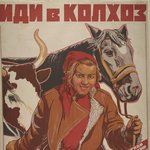 Agrarian Transformations in the Twentieth Century:
Agrarian Transformations in the Twentieth Century:
Ppractitioners, Actors, Researchers
V.B. Laperdin
Group Conflicts in the Collective Farm Society of West Siberian Region in the 1930s
The purpose of the article is to show the role and significance of group relations in collective farm society on the basis of documents on the West Siberian Territory. Due to the disintegration of the peasant community and the high social mobility in the collective farm society that replaced it, group relations became widespread. They often had a conflict character, and increased the level of aggression in the peasant environment, but at the same time they could be a way of protecting against state policy.
Publishing: 28/08/2021
How to cite: Laperdin V.B. Group Conflicts in the Collective Farm Society of West Siberian Region in the 1930s // Historical Courier, 2021, No. 4 (18), pp. 38–52. [Available online:] http://istkurier.ru/data/2021/ISTKURIER-2021-4-04.pdf
 Agrarian Transformations in the Twentieth Century:
Agrarian Transformations in the Twentieth Century:
Ppractitioners, Actors, Researchers
S.V. Sharapov
Production and Procurement of Grain in the Novosibirsk Region in 1942
The article is devoted to the analysis of the grain procurement campaign of 1942/1943 in the Novosibirsk region, which coincided with a turning point during the Great Patriotic War, the bloody battles for Stalingrad. It is concluded that the harvest collected in 1942 was extremely low. This led to a sharp tilt towards command and administrative methods of conducting a procurement campaign, accompanied by reprisals against “saboteurs” and “robbers” of grain.
Funding: The research was funded by RFBR, project number 21-09-43020.
Publishing: 28/08/2021
How to cite: Sharapov S.V. Production and Procurement of Grain in the Novosibirsk Region in 1942 // Historical Courier, 2021, No. 4 (18), pp. 53–66. [Available online:] http://istkurier.ru/data/2021/ISTKURIER-2021-4-05.pdf
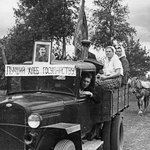 Agrarian Transformations in the Twentieth Century:
Agrarian Transformations in the Twentieth Century:
Ppractitioners, Actors, Researchers
O.N. Argunov
Grain Collection in 1946 in the Kursk Region: Was it Possible to Prevent Starvation?
The modern Russian historiography of the famine of 1946–1947 clearly shows that one of the reasons for this terrible catastrophe was the grain procurement campaign of 1946, which allowed the state to receive millions of tons of grain, taking it away from starving collective farmers. However, the materials of regional historiography still give a more colorful picture of the events that took place in these years in the Soviet collective farm village. In this paper, for the first time, an attempt is made to analyze the regional features of the 1946 grain procurement campaign in the Kursk region and assess its role in creating the prerequisites for the last Soviet large-scale hunger strike.
Publishing: 28/08/2021
How to cite: Argunov O.N. Grain Collection in 1946 in the Kursk Region: Was it Possible to Prevent Starvation? // Historical Courier, 2021, No. 4 (18), pp. 67–77. [Available online:] http://istkurier.ru/data/2021/ISTKURIER-2021-4-06.pdf
 Agrarian Transformations in the Twentieth Century:
Agrarian Transformations in the Twentieth Century:
Ppractitioners, Actors, Researchers
O.A. Sukhova
Soviet Village in the Second Half of the 1940s – Early 1950s: Mobilization Management and Social Interaction Practices
The article considers the possibilities of applying systematic and synergetic approaches to the history of the post-war Soviet village. The mechanisms of social interaction in the conditions of transformation of the mobilization economy are revealed. The assessment of the effectiveness of management decisions is given, the practices of adaptation of the collective farm peasantry to the peculiarities of a specific model of labor relations are determined. Based on the analysis of normative documents, office records and sources of personal origin of the period of the second half of the 1940s-early 1950s, the crisis nature of the agrarian policy of the Soviet leadership, provoking the deformation of social interaction practices, is proved.
The work was carried out with the financial support of the RFBR (project No. 18-09-00125) “Economics and Practice of social Interaction in the Soviet Village in the Context of the Mobilization Economy of the USSR in the 1930s – Early 1950s”.
Publishing: 28/08/2021
How to cite: Sukhova О.А. Soviet Village in the Second Half of the 1940s – Early 1950s: Mobilization Management and Social Interaction Practices // Historical Courier, 2021, No. 4 (18), pp. 78–87. [Available online:] http://istkurier.ru/data/2021/ISTKURIER-2021-4-07.pdf
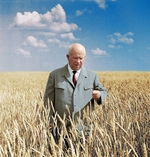 Agrarian Transformations in the Twentieth Century:
Agrarian Transformations in the Twentieth Century:
Ppractitioners, Actors, Researchers
E.E. Temnikova
Development of Virgin and Fallow Lands: Some Results of the Study
The issues of agrarian development of Russia in the 20th century have always attracted the attention of researchers. A huge number of articles and monographic works have been published that reflect the main stages of studying the history of agriculture. Much attention is paid by researchers to the study of the history of agrarian policy and agrarian transformations, which relate to the period of N.S. Khrushchev era of leadership. The article attempts to highlight some of the results of the development of virgin land.
Publishing: 28/08/2021
How to cite: Temnikova E.E. Development of Virgin and Fallow Lands: Some Results of the Study // Historical Courier, 2021, No. 4 (18), pp. 88–97. [Available online:] http://istkurier.ru/data/2021/ISTKURIER-2021-4-08.pdf
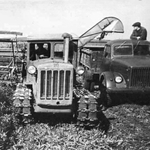 Agrarian Transformations in the Twentieth Century:
Agrarian Transformations in the Twentieth Century:
Ppractitioners, Actors, Researchers
V.N. Tomilin
Repair and Technical Stations and Collective Farms
The article considers the results of the Khrushchev’s 1958 reform, as a result of which machine and tractor stations (MTS) reorganization into repair and technical stations (RTS), and agricultural machinery was sold to collective farms. The author studies the nature of interaction between RTS and collective farms, shows the failure of reformers in finding a mechanism for effective interaction between them.
Publishing: 28/08/2021
How to cite: Tomilin V.N. Repair and Technical Stations and Collective Farms // Historical Courier, 2021, No. 4 (18), pp. 98–108. [Available online:] http://istkurier.ru/data/2021/ISTKURIER-2021-4-09.pdf
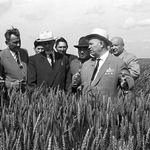 Agrarian Transformations in the Twentieth Century:
Agrarian Transformations in the Twentieth Century:
Ppractitioners, Actors, Researchers
S.N. Andreenkov
State and Collective Farm System in the First Half of the 1960s: Development Problems and Anti-Crisis Recommendations of Scientific Economists
In the early 1960s, signs of crisis appeared in the agriculture of the USSR. The Supreme power tried to improve the situation in the industry mainly with the help of administrative measures. In 1962–1963, analytical notes were sent to N. S. Khrushchev from the major scientists-economists – K.P. Obolensky, N.Ya. Itskov, M.Ya. Lemeshev, S.G. Kolesnev, who proposed to accelerate the pace of development of collective farms and state farms by using economic levers. The anti-crisis recommendations of these experts and the steps of the supreme power to implement them are a relevant scientific and historical topic. In this article, an attempt is made to report a detailed and substantive analysis of this topic.
Funding: The research was funded by RFBR, project number 21-09-43020.
Publishing: 28/08/2021
How to cite: Andreenkov S.N. State and Collective Farm System in the First Half of the 1960s: Development Problems and Anti-Crisis Recommendations of Scientific Economists // Historical Courier, 2021, No. 4 (18), pp. 109–120. [Available online:] http://istkurier.ru/data/2021/ISTKURIER-2021-4-10.pdf
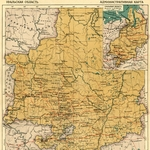 Socio-Demographic Processes
Socio-Demographic Processes
in the Soviet and Post-Soviet Period
G.E. Kornilov
Transformation of Demographic Structures Into Urban Settlements (Based on the Materials of the Ural Region in 1923–1934)
The article analyzes the dynamics of the urban population of the Ural region, identifies the stages of its growth and the main factors that influenced the demography of the region. It is noted that in the 1920s there was a demographic transition, but the demographic situation was not stable. Food difficulties and the outbreak of famine in the early 1930s affected demographic development, which coincided with the demographic cycle that began after the catastrophe of the early 1920s. These two factors were evidence of the demographic crisis and determined the subsequent development of the population.
The study was carried out with the financial support of the RFBR within the framework of the scientific project No. 20-09-00032 “Transformation of Demographic Structures of Russian Society in the Late XIX – Early XXI Centuries: a Regional Aspect”.
Publishing: 28/08/2021
How to cite: Kornilov G.E. Transformation of Demographic Structures Into Urban Settlements (Based on the Materials of the Ural Region in 1923–1934) // Historical Courier, 2021, No. 4 (18), pp. 121–132. [Available online:] http://istkurier.ru/data/2021/ISTKURIER-2021-4-11.pdf
 Socio-Demographic Processes
Socio-Demographic Processes
in the Soviet and Post-Soviet Period
M.A. Semenov
The Spread of Malaria in Western Siberia During the Great Patriotic War
The article examines the dynamics of the incidence of malaria in Western Siberia during the Great Patriotic War. The characteristic features of the spread of this disease, the specifics of its course are considered. The main forms and methods of combating it are shown. Summary data on the spread of malaria in the regions of Western Siberia are presented. The factors that determined the dynamics of morbidity are disclosed. It is concluded that during the war, the trend to reduce the spread of malaria, which was formed in the pre-war period, was broken, and there was a temporary return to the growth of this infection.
Publishing: 28/08/2021
How to cite: Semenov М.А. The Spread of Malaria in Western Siberia During the Great Patriotic War // Historical Courier, 2021, No. 4 (18), pp. 133–141. [Available online:] http://istkurier.ru/data/2021/ISTKURIER-2021-4-12.pdf
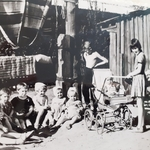 Socio-Demographic Processes
Socio-Demographic Processes
in the Soviet and Post-Soviet Period
Yu.V. Ryabov, M.V. Sentyabova, Y.V. Smirnova
Infant and Child Mortality in Krasnoyarsk (1959–1965)
Throughout the entire period under study, infant and child mortality in Krasnoyarsk decreased at a rather slow pace. Among the causes of child and infant mortality in Krasnoyarsk during this period, the first place was occupied by pneumonia – up to 45 % of all cases, in the second and third places – diseases of newborns and gastrointestinal infections. To solve these problems, during the period from 1959 to 1965, the number of medical sites was increased and the material and technical condition of children's hospitals was improved. Work was carried out to improve the skills of doctors and secondary medical workers, as well as to popularize sanitary and hygienic knowledge among the population of the city. This has led to a significant reduction in the spread of pneumonia and a decrease in the level of infant and child mortality.
The study was carried out with the financial support of the RFBR, the Government of the Krasnoyarsk Territory and the Regional Science Foundation within the framework of the scientific project No. 19-49-240002.
Publishing: 28/08/2021
How to cite: Ryabov Yu.V., Sentyabova M.V., Smirnova E.V. Infant and Child Mortality in Krasnoyarsk (1959–1965) // Historical Courier, 2021, No. 4 (18), pp. 142–153. [Available online:] http://istkurier.ru/data/2021/ISTKURIER-2021-4-13.pdf
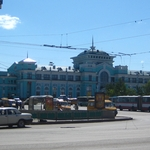 Socio-Demographic Processes
Socio-Demographic Processes
in the Soviet and Post-Soviet Period
O.B. Dashinamzhilov
The Role of Migration in the Formation of Urban Populations of the Omsk Region in the Context of Economic Development of the East of the Country in 1960s
During the implementation of the state policy aimed at rationalizing the territorial distribution of productive forces and the development of natural resources in the eastern regions, the nature of the migration movement of the population in Siberia has changed. In this regard, it is of great interest how spatial movements in its individual regions have been transformed. While some attention has been paid to migration in Siberia as a whole, there are still many poorly studied aspects of this problem at the regional level. The article considers the scale, trends and territorial directions of migration flows in urban settlements of the Omsk region in the 1960s.
Publishing: 28/08/2021
How to cite: Dashinamzhilov O.B. The Role of Migration in the Formation of Urban Populations of the Omsk Region in the Context of Economic Development of the East of the Country in 1960s // Historical Courier, 2021, No. 4 (18), pp. 154–162. [Available online:] http://istkurier.ru/data/2021/ISTKURIER-2021-4-14.pdf
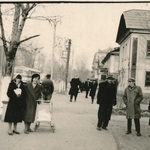 Socio-Demographic Processes
Socio-Demographic Processes
in the Soviet and Post-Soviet Period
N.V. Gonina
Demographic Dialectics of Krasnoyarsk in the 1960s
The article considers the aspects of the third stage of demographic transition (birth rate, mortality, marriage, divorce, migration) among the urban population in the 1960s using the local example of the city of Krasnoyarsk. It was revealed that Krasnoyarsk did not differ from the average data for the RSFSR in a number of indicators. The birth rate was gradually decreasing. The number of second and third children in the family sharply decreased. The age of a woman at the birth of her first child increased. A negative feature of Krasnoyarsk was the high infant mortality and supermortality among men. The active migration influx did not solve the problem, since the departures from Krasnoyarsk were almost equal to the number of arrivals. As a result, the prerequisites for a reduction in the population gradually developed.
The study was carried out with the financial support of the RFBR, the Government of the Krasnoyarsk Territory and the Regional Science Foundation within the framework of the scientific project No. 19-49-240002.
Publishing: 28/08/2021
How to cite: Gonina N.V. Demographic Dialectics of Krasnoyarsk in the 1960s // Historical Courier, 2021, No. 4 (18), pp. 163–173. [Available online:] http://istkurier.ru/data/2021/ISTKURIER-2021-4-15.pdf
 Socio-Demographic Processes
Socio-Demographic Processes
in the Soviet and Post-Soviet Period
A.A. Burmatov
Child Mortality in the 1970s in Western Siberia
The article considers the dynamics of morbidity and mortality of the child population of Western Siberia in the 1970s. Special attention is paid to the mortality of newborns, which shows the level of development of medicine and its ability to provide effective assistance to society and, especially, to the family in overcoming the most difficult period in a person’s life. The reasons for the negative dynamics of child mortality and their structure are analyzed. The reaction of the state to this problem is considered.
Publishing: 28/08/2021
How to cite: Burmatov A.A. Child Mortality in the 1970s in Western Siberia // Historical Courier, 2021, No. 4 (18), pp. 174–185. [Available online:] http://istkurier.ru/data/2021/ISTKURIER-2021-4-16.pdf
 Socio-Demographic Processes
Socio-Demographic Processes
in the Soviet and Post-Soviet Period
E.E. Tinikova
Demographic Modernization of the Sayan-Altai Republics: Terms, Stages, Features
In the article the author analyzes the features of demographic modernization in Khakassia, Tuva and Altai. The intermittent, long-term, catching-up nature of the demographic modernization of the national administrative units of Sayano-Altai was associated with the structure of the population. The distinctive features of the population structure of the region were its polyethnicity, with the predominance of two main ethnic groups in each of the units (Russians and the local indigenous population), young age, a large number of rural population (with the exception of Khakassia).
Publishing: 28/08/2021
How to cite: Tinikova E.E. Demographic Modernization of the Sayan-Altai Republics: Terms, Stages, Features // Historical Courier, 2021, No. 4 (18), pp. 186–194. [Available online:] http://istkurier.ru/data/2021/ISTKURIER-2021-4-17.pdf
 Socio-Demographic Processes
Socio-Demographic Processes
in the Soviet and Post-Soviet Period
N.N. Ablazhey
Results of the Implementation of the First Stage of the Compatriots Resettlement Programme for the Eastern Regions of Russia (2007–2012)
The article is devoted to the analysis of the modern repatriation policy of Russia in the light of the implementation of the first stage (2007-2012) of the state “Program of voluntary resettlement of compatriots living abroad” for the regions of the Siberian and Far Eastern Federal Districts. The emphasis is placed on the analysis of both the federal component of the program and the regional resettlement modules. It is concluded that repatriation within the framework of the state program for the resettlement of compatriots is a typical planned resettlement, the priority of which is the interests of the state, which ultimately negatively affects the scale of return migration.
Publishing: 28/08/2021
How to cite: Ablazhey N.N. Results of the Implementation of the First Stage of the Compatriots Resettlement Programme for the Eastern Regions of Russia (2007–2012) // Historical Courier, 2021, No. 4 (18), pp. 195–202. [Available online:] http://istkurier.ru/data/2021/ISTKURIER-2021-4-18.pdf
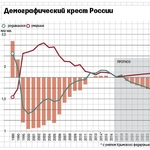 Socio-Demographic Processes
Socio-Demographic Processes
in the Soviet and Post-Soviet Period
L.N. Slavina
Demographic Potential of the Krasnoyarsk Krai in the Context of Social Transformations in the Post-Soviet Decades
In the article, using the example of the Krasnoyarsk Krai, the main trends in the development of the demographic potential of the Siberian territories in the post-Soviet thirty years are considered. It finds out what potential Siberians came with in the new period of the country’s development, how it changed in the conditions of a radical transformation of society and what features of this process were manifested in the region. It also evaluates the quality of demographic potential at the present time, its possibilities in the reproduction of the population and modernization of all spheres of life in the future. All the processes in the region have been studied in comparison with similar processes in Russia as a whole. The analysis is based on the results of the general population censuses of 1989, 2002 and 2010, micro-censuses of 1994 and 2015, and current statistics.
Publishing: 28/08/2021
How to cite: Slavina L.N. Demographic Potential of the Krasnoyarsk Krai in the Context of Social Transformations in the Post-Soviet Decades // Historical Courier, 2021, No. 4 (18), pp. 203–213. [Available online:] http://istkurier.ru/data/2021/ISTKURIER-2021-4-19.pdf



